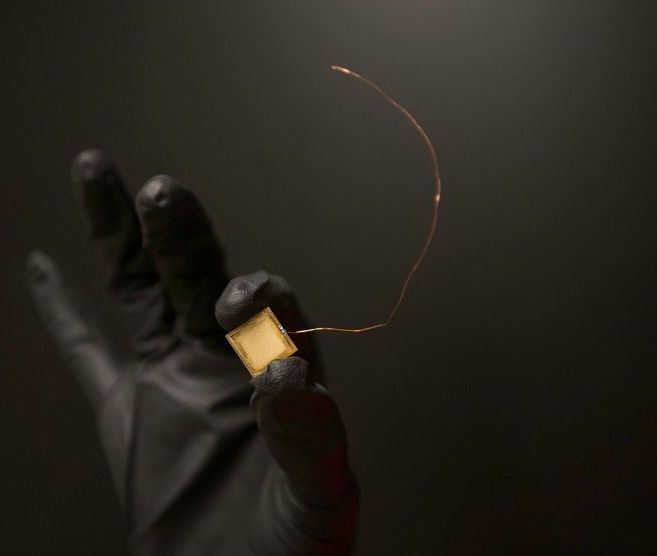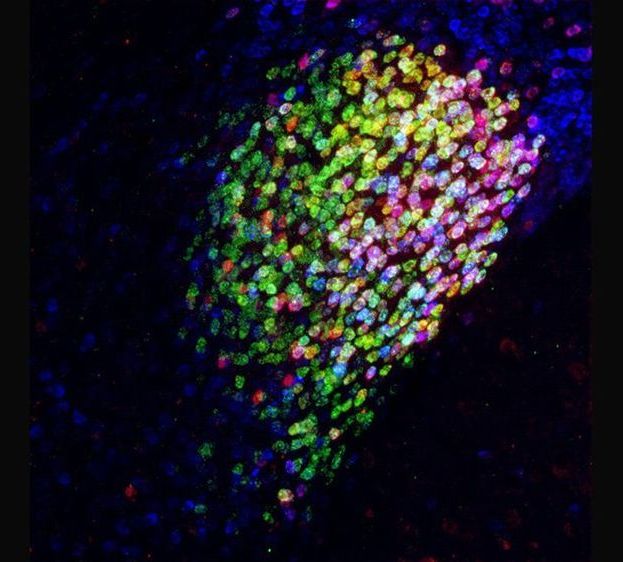Carlsberg and Coca-Cola back pioneering project to make ‘all-plant’ drinks bottles.
Ion propulsion company Accion Systems has raised $11 million in its latest funding round and has launches and contracts planned this year with NASA, the DoD and academic institutions.
Researchers designed a 3D virtual environment just for insects to determine how controlled stimuli, like air and scent, would change their flying behavior.
Fingerprints and DNA are widely known forms of biometrics, thanks to crime dramas on television. But as technology advances the Internet of Things, the interconnection of computer devices in common objects, other forms of biometrics are sought for security. For example, distinctive physical characteristics of users are increasingly used in computer science as forms of identification and access restriction. Smartphones use fingerprints, iris scans and face recognition in this way. Other biometrics that are likely to come into use include retinas, veins and palm prints.
The ear is another potential biometric. According to research published recently in the Journal of Electronic Imaging, ear recognition technology, or “earprints,” could one day be used as personal identification to secure smart homes via smartphones.
Microbial life is likely fairly ubiquitous in the cosmos, new statistical models indicate. But extraterrestrial intelligence? Not so much.
A pre-print study reveals that young blood plasma given to older mice reduced aging by an average of 54% across multiple tissues; and had an impact on other signs of aging, such as cellular senescence, fat accumulation, and behavioural measures.
A Duke University research team has found a small area of the brain in mice that can profoundly control the animals’ sense of pain.
Somewhat unexpectedly, this brain center turns pain off, not on. It’s also located in an area where few people would have thought to look for an anti-pain center, the amygdala, which is often considered the home of negative emotions and responses, like the fight or flight response and general anxiety.
“People do believe there is a central place to relieve pain, that’s why placebos work,” said senior author Fan Wang, the Morris N. Broad Distinguished Professor of neurobiology in the School of Medicine. “The question is where in the brain is the center that can turn off pain.”
The new module’s big advantage is that it has its own processor and memory built in, which allows it to analyze video using AI tech like Microsoft’s Azure, but in a self-contained system that’s faster, simpler and more secure to operate than existing methods.
Sony Corp. and Microsoft Corp. have partnered to embed artificial intelligence capabilities into the Japanese company’s latest imaging chip, a big boost for a camera product the electronics giant describes as a world-first for commercial customers.
U.S. National Institute of Allergy and Infectious Diseases Director Anthony Fauci called the vaccine’s preclinical data “impressive” and told National Geographic this week that a vaccine could be ready for general use as early as January.
The Phase I trial has dosed 45 healthy adults. Phase II trials are about to start, enrolling around 600 adults. Pivotal efficacy trials would follow soon thereafter, bankrolled in collaboration with the government office BARDA (Biomedical Advanced Research and Development Authority).
Today, the chief medical officer of Moderna, Tal Zaks, answered burning questions from the public in a webinar hosted by STAT. Here’s an edited and condensed summary of his answers.
The contracting giant will provide the JAIC with “data labeling, data management, data conditioning, AI product development, and the transition of AI products into new and existing fielded programs,” according to the GSA news release.
“The delivered AI products will leverage the power of DoD data to enable a transformational shift across the Department that will give the U.S. a definitive information advantage to prepare for future warfare operations,” the release said.
The contract will support the JAIC’s new joint warfighting mission initiative, launched earlier this year. The initiative includes “Joint All-Domain Command and Control; autonomous ground reconnaissance and surveillance; accelerated sensor-to-shooter timelines; operations center workflows; and deliberate and dynamic targeting solutions,” said JAIC spokesperson Arlo Abrahamson told C4ISRNET in January.









